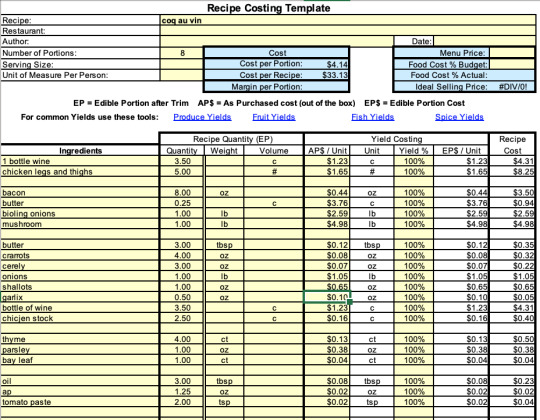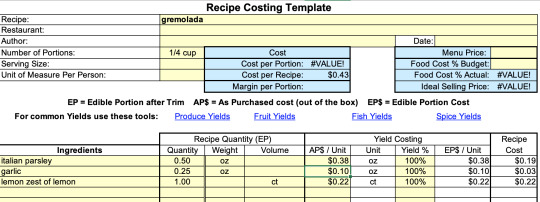Text
Iran and Georgia
INTRODUCTION
This week, I will be learning…
Method: frying, grilling, roasting, salad dressing
Menu:
Steamed Rice pg. 630 Persian Flatbread pg 636 Tahchin Morgh (Rice Stuffed with Chicken) Mirza Ghasemi (Eggplant Dip) Fesenjoon (pomegranate & walnut chicken stew) pg 627 kabab Koobideh (ground beef)
Sustainability Topic: water
Prior Knowledge
We have made some kebabs before. I am not sure what Iranian or Georgian food I have had before. The rice technique seems appealing. I think the shape always adds a great look to rice.
Learning Objectives
This week, we will Introduce the rich and varied histories of Iran and Georgia, their diverse geographies, cultural influences, and climates. Introduce the culinary culture, regions, and dining etiquette in Iran and Georgia. Discuss the importance of religion and the Silk Road on both cuisines. Discuss the importance of the supra and tamada on dining etiquette in Georgia. Identify the foods, flavor foundations, seasoning devices, and favored cooking techniques. Teach the techniques and the marvelous, creative dishes of ancient Persia, Iran, and the Republic of Georgia.
RESEARCH
Method of Cooking
Fat: Olive oil, butter, clarified butter, vegetable oil, sheep tail fat, dehen (seasoned sheep tail fat)
Sweet: Sugar, honey, pomegranate molasses, grape molasses, carob molasses
Sour/alcohol: Lemon, orange, bitter orange, red or white wine vinegar, pomegranate syrup, sumac powder, yogurt, kishk (fermented and powdered yogurt and bulgur)
Salty: Salt, olives
Spicy-Hot: Red chili pepper flakes, white and black pepper
Spice: Aniseed, cumin, allspice, cinnamon, saffron, cardamom, bay leaves, nutmeg, cloves, mastic, mahlab (ground cherry kernels), za’atar (spice blend of thyme, sesame, and sumac), mastic, seven-spice blend
Aromatic Seasoning Vegetables: Onion, garlic, carrot, celery, green onions
Herbs, Seasonings, and condiments: Italian parsley, mint, cilantro, oregano, orange blossom and rose flower waters, rose petal jam
Other important Foods: Sesame seed, tahini (sesame paste), nuts (pine nuts, pistachios, almonds, walnuts), burghul (bulgar wheat), short-grain rice, freekeh (roasted green wheat), fillo pastry, chickpeas, lentils, fruit (apricots, cherries, quince, dates, figs), olives, grape leaves, cabbage, eggplant, zucchini, tomatoes, cucumbers, romaine, artichokes, okra, green beans, fish, meat (lamb, chicken, goat), pastirma or basturma (spice-rubbed, dry-cured beef)
Popular Dishes: Khobz arabi (flatbread) and khobz marquq (paper-thin flatbread), baklava, hummus (chickpea and tahini dip), baba ghanouji (eggplant dip), kibbeh (dish with lamb and bulgar), fattoush (salad with dried or toasted flatbread), labneh (strained yogurt), m’jaddarah (lentils, rice, and crisp-fried onion), tabbouleh (bulgar wheat salad), falafel (deep-fried chickpea balls), mezze (any dish served in small portions as appetizer), shawarma (shaved grilled meat)
Drinks: Ayran (yogurt drink), tea, Arabic and Turkish coffee, arak (anise-flavored liqueur), lemonade, beer, wine, jallab (drink made with ice, grape molasses, and nuts)
https://www.hungrypaprikas.com/ayran/
Origin and History
“Iran has long been an intersection of East and West, absorbing dark invasions, trade, disaster, conquests, migrations, and settlements. Over centuries, Persian, Byzantine, Frankish, Slavic (Balkan), Roman, Venetian, and Turkish foods and techniques, like paprika, lemons, tomatoes, bell peppers, and potatoes, influenced the continually evolving Iranian cuisine. “ (1)
Map of Cuisines
What influences the various areas being studied? For example, does the area have maritime influences, mountains, dry, Mediterranean climate, what is the weather like?
Prepare the following questions for class discussion:
Iran/Persia
What is the reason for the early sophistication of Persian Cuisine?
What other cultural influences shaped Persian-Iranian cuisine?
What was the Silk-Road?
Name two important Persian dishes?
Republic of Georgia
What cultures left their influences on Georgian cuisine?
Discuss the foods and herbs important to Georgian cuisine.
What is the premier soup of Georgia? What are its main ingredients?
In your research, bring one-two interesting findings from the area to share in class.
Dish Method Variations
Falafel: Bake or Broil: Brush the balls or pat- ties with olive oil and bake in preheated 400 degree F oven 20 minutes, then broil to brown them.
Sources
1) Discovering Global Cuisines
2)https://www.whiskaffair.com/sumac-onions-recipe/
RECIPES
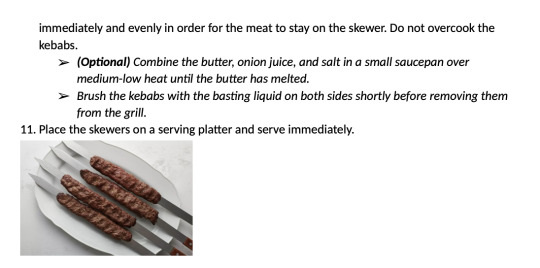


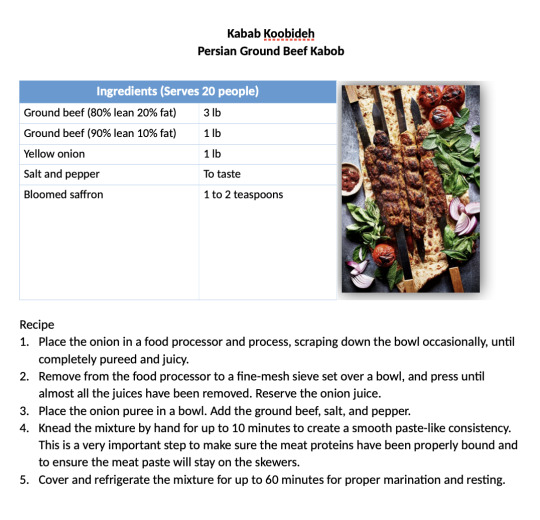
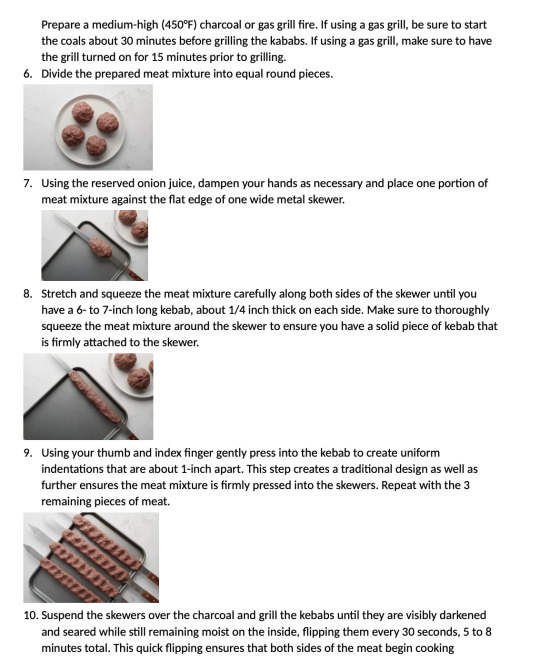
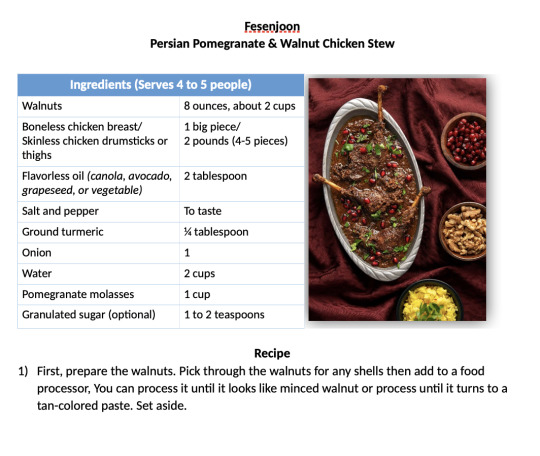
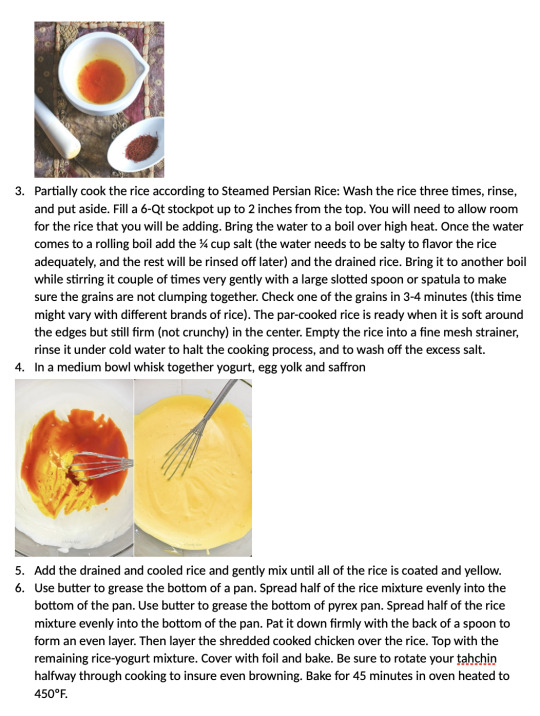
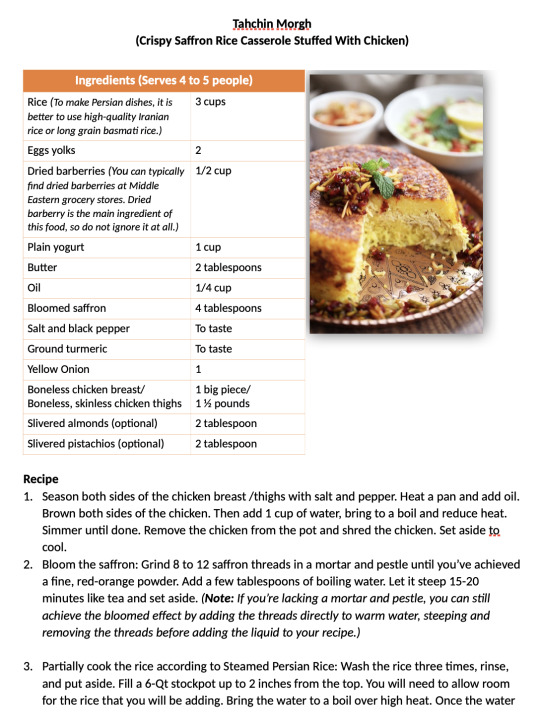
0 notes
Text
Lebanon and Jordan
INTRODUCTION
This week, I will be learning…
Method: frying, grilling, roasting, salad dressing
Menu:
Falafel, Arabic Bread, Tahini Sauce, Lebanese Savory Pies, Salad with Lebanese Sumac Dressing, Lamb & Beef Shawarma, Chicken Maklobeh, Tabbouleh, Hummus, Toum
Prior Knowledge
Hummus is really hard to make if you want to remove the skins. Pita is a great bread. I love the pouch and to put toppings in it.
Learning Objectives
This week, we will introduce the long history of Lebanon, its geography, religious and cultural influences, and climate. Discuss Lebanon’s important location at the edge of the Fertile Crescent, bordering the Eastern Mediterranean. Introduce Lebanon’s culinary culture, its influence on other Middle East and Eastern Mediterranean countries, its two main culinary regions and dining etiquette. Identify Lebanese and Middle Eastern foods, flavor foundations, seasoning devices, and favored cooking techniques. Teach the techniques and succulent dishes of the Lebanon and the Middle East.
RESEARCH
Method of Cooking
Fat: Olive oil, butter, clarified butter, vegetable oil, sheep tail fat, dehen (seasoned sheep tail fat)
Sweet: Sugar, honey, pomegranate molasses, grape molasses, carob molasses
Sour/alcohol: Lemon, orange, bitter orange, red or white wine vinegar, pomegranate syrup, sumac powder, yogurt, kishk (fermented and powdered yogurt and bulgur)
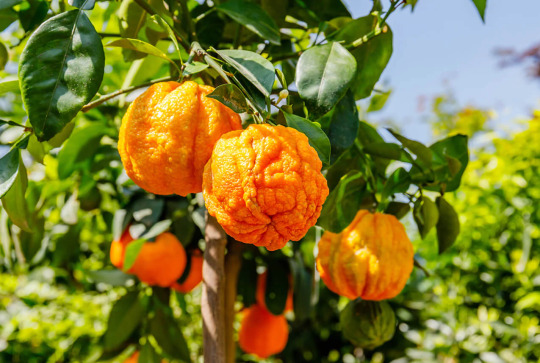
Salty: Salt, olives
Spicy-Hot: Red chili pepper flakes, white and black pepper
Spice: Aniseed, cumin, allspice, cinnamon, saffron, cardamom, bay leaves, nutmeg, cloves, mastic, mahlab (ground cherry kernels), za’atar (spice blend of thyme, sesame, and sumac), mastic, seven-spice blend
Aromatic Seasoning Vegetables: Onion, garlic, carrot, celery, green onions
Herbs, Seasonings, and condiments: Italian parsley, mint, cilantro, oregano, orange blossom and rose flower waters, rose petal jam
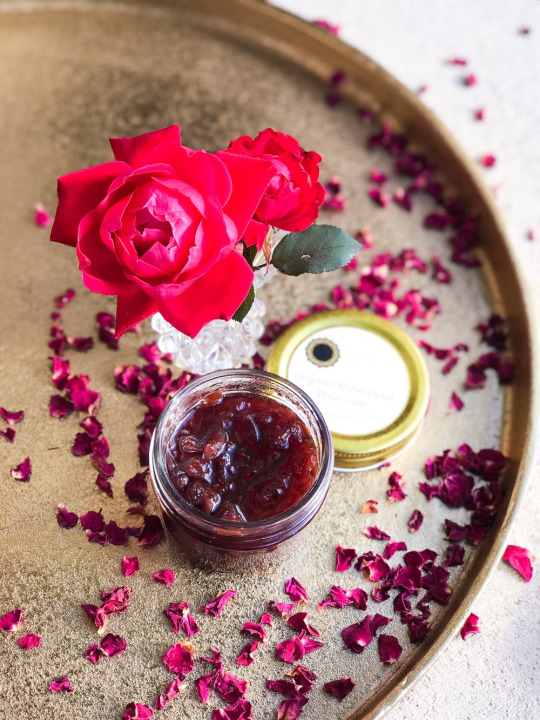
Other important Foods: Sesame seed, tahini (sesame paste), nuts (pine nuts, pistachios, almonds, walnuts), burghul (bulgar wheat), short-grain rice, freekeh (roasted green wheat), fillo pastry, chickpeas, lentils, fruit (apricots, cherries, quince, dates, figs), olives, grape leaves, cabbage, eggplant, zucchini, tomatoes, cucumbers, romaine, artichokes, okra, green beans, fish, meat (lamb, chicken, goat), pastirma or basturma (spice-rubbed, dry-cured beef)
Popular Dishes: Khobz arabi (flatbread) and khobz marquq (paper-thin flatbread), baklava, hummus (chickpea and tahini dip), baba ghanouji (eggplant dip), kibbeh (dish with lamb and bulgar), fattoush (salad with dried or toasted flatbread), labneh (strained yogurt), m’jaddarah (lentils, rice, and crisp-fried onion), tabbouleh (bulgar wheat salad), falafel (deep-fried chickpea balls), mezze (any dish served in small portions as appetizer), shawarma (shaved grilled meat)
Drinks: Ayran (yogurt drink), tea, Arabic and Turkish coffee, arak (anise-flavored liqueur), lemonade, beer, wine, jallab (drink made with ice, grape molasses, and nuts)
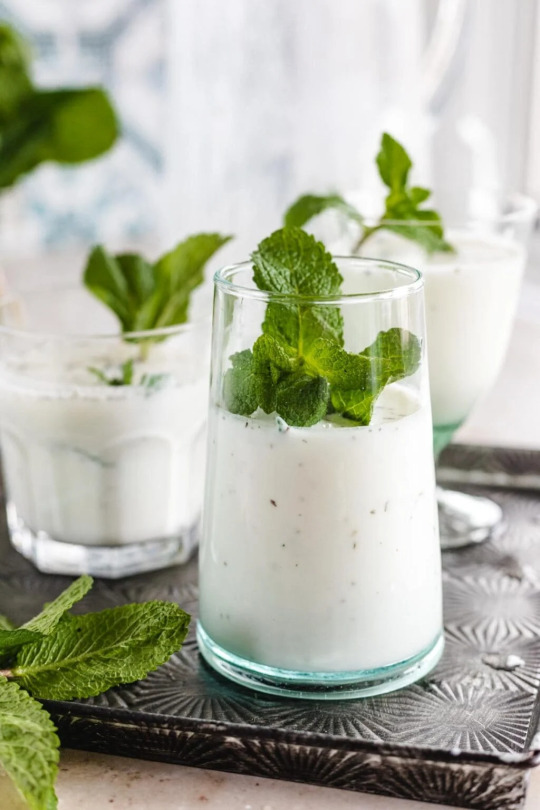
https://www.hungrypaprikas.com/ayran/
Origin and History
“Greece has long been an intersection of East and West, absorbing dark invasions, trade, disaster, conquests, migrations, and settlements. Over centuries, Persian, Byzantine, Frankish, Slavic (Balkan), Roman, Venetian, and Turkish foods and techniques, like paprika, lemons, tomatoes, bell peppers, and potatoes, influenced the continually evolving Greek cuisine. “ (1)
Map of Cuisines
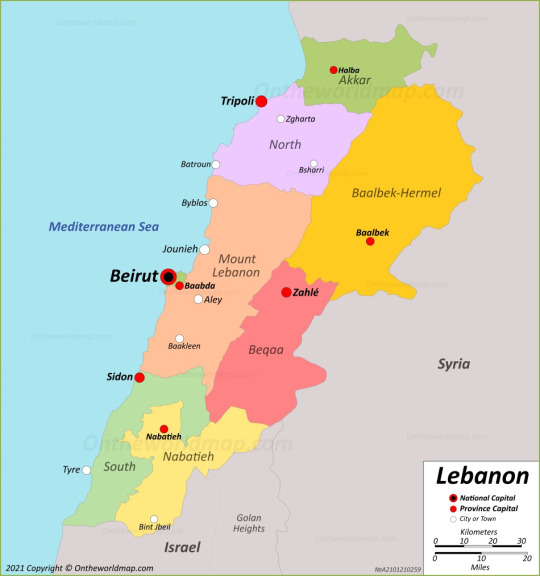
Prepare the following questions for class discussion:
What influences the various areas being studied? For example, does the area have maritime influences, mountains, dry, Mediterranean climate, what is the weather like?
Name two cultures that influenced Lebanese Cuisine.
Discuss kibbeh and its various forms.
Discuss the fats that are used in Lebanese Cuisine.
In your research, bring one-two interesting findings from the area to share in class.
Dish Method Variations
Falafel: Bake or Broil: Brush the balls or pat- ties with olive oil and bake in preheated 400 degree F oven 20 minutes, then broil to brown them.
Sources
1) Discovering Global Cuisines
2)https://www.whiskaffair.com/sumac-onions-recipe/
RECIPES
falafel
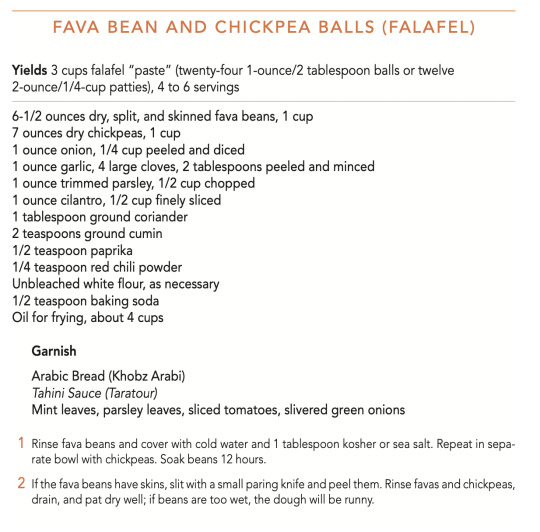
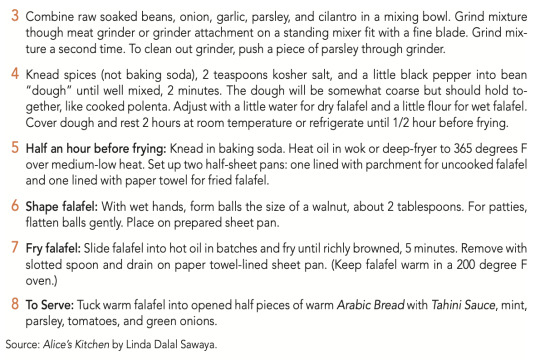
hummus bi tehine
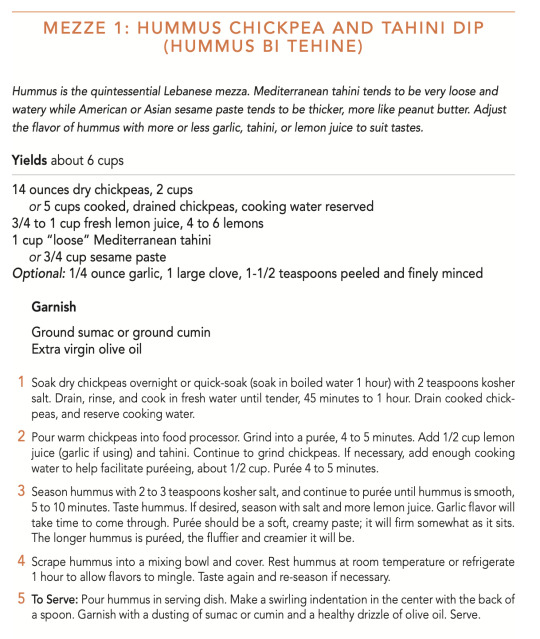
arabic bread
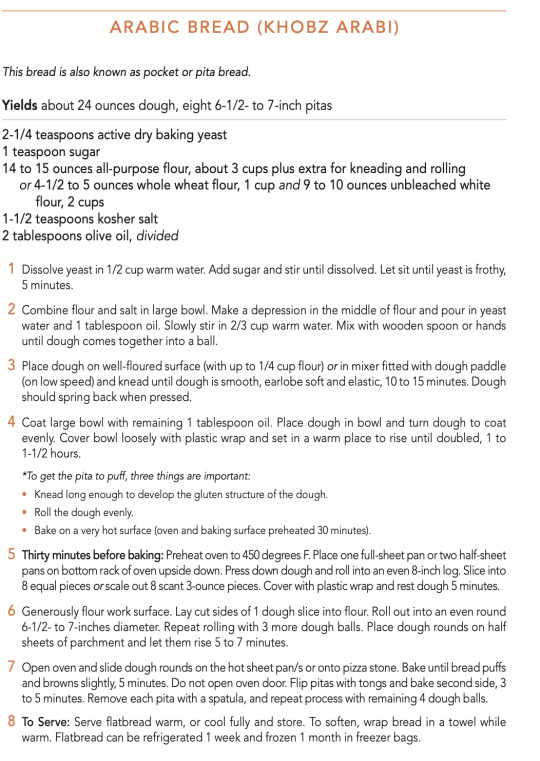
lebanese salad
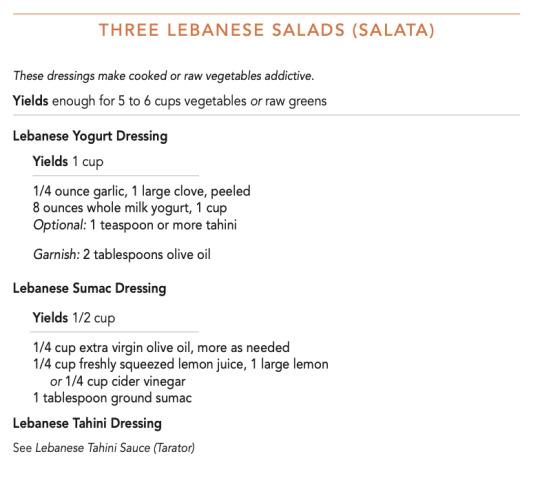

savory pies, fatayer
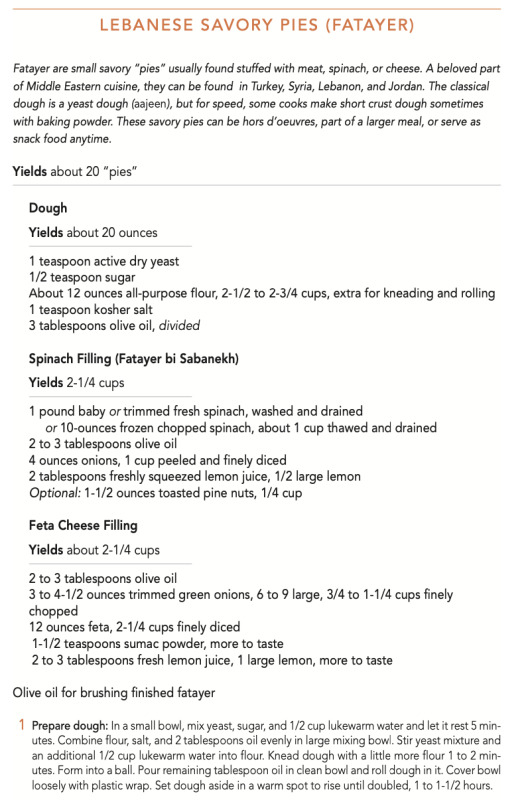

tabbouleh
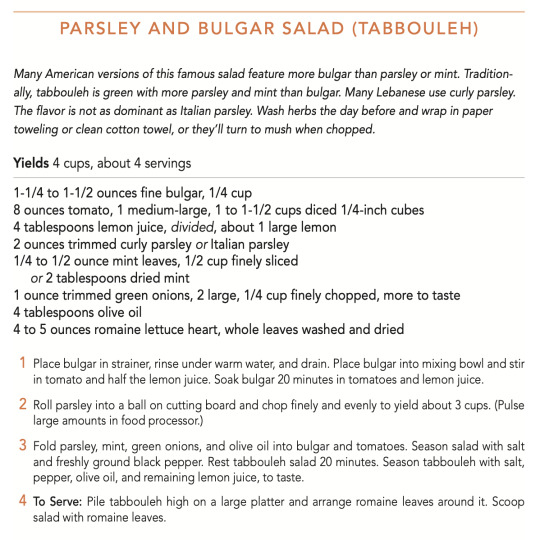
toum sauce
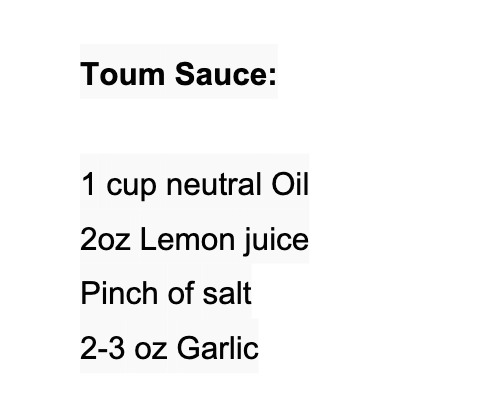
tahini sauce

Plan of Work
REFLECTION
Technique/cooking method:
Makloubeh:


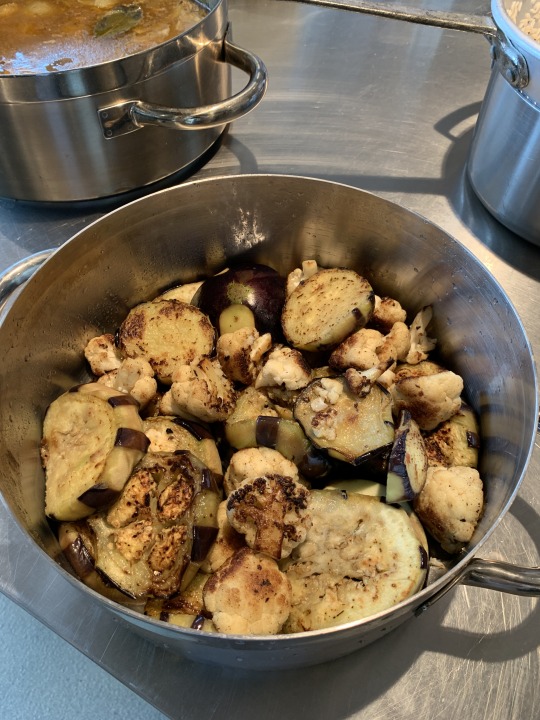



Hummus:

Tabbouleh:
Baklava:
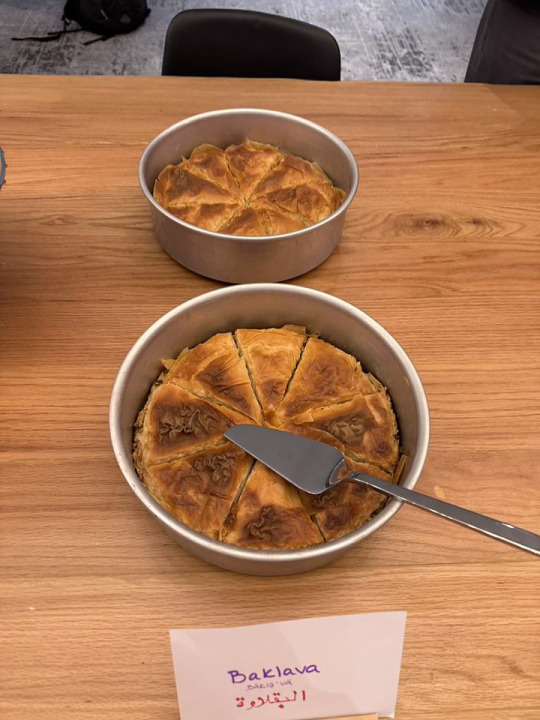
Evaluation of results:
Discuss the techniques that did work well.
Discuss the techniques that did not work well.
Conclusions
The learning objectives were met. We identified Lebanese and Middle Eastern foods, flavor foundations, seasoning devices, and favored cooking techniques. Teach the techniques and succulent dishes of the Lebanon and the Middle East.
Thank you for reading!
0 notes
Text
Greece and Turkey
INTRODUCTION
This week, I will be learning…
Method: baked dish, skewered meat, dolmades
Menu:
Egg Lemon Sauce (Avgolemono) pg. 508
Greek Stuffed & Braised Grape Leaves pg. 520 Greek Moussaka pg. 530
Northern Turkish Ground Meatball with
Turkish Flatbread pg. 564
Onion & Sumac Salad pg. 568
Moroccan Preserved Lemons 708 (for module 13)

Prior Knowledge
Turkish coffee is something that I had a great time drinking. All of the sludge in the bottom made drinking it more mentally engaging since you have to be vigilant. Kofte is something that I have heard great things about and I am super excited to make it!
Learning Objectives
This week, we will introduce the intertwined and turbulent histories of Greece and Turkey, their geographies, cultural influences, and climate.
2. Discuss the importance of the Silk Road, the expulsion of Christian Greeks from Asia Minor, and the Ottoman Empire on both Greek and
Turkish cuisines.
3. Introduce Greek and Turkish culinary cultures, their diverse regional variations, and dining etiquette.
4. Identify foods, dishes, and techniques that cross between countries.
5. Identify the foods, flavor foundations, seasoning devices, and favored cooking techniques of both Greece and Turkey.
6. Teach the techniques and recipes for the luscious, long-lived dishes of Greece and Turkey.
RESEARCH
Method of Cooking
Greece’s ancient ancestors were hunter-fisher-gatherers. They baked in clay ovens, grilled over wood fires, or roasted in embers.
Fat: Olive oil, butter
Sweet: Honey, sugar, petimézi (grape must syrup)
Sour/alcohol: Lemon, orange, Seville orange, red wine vinegar, verjuice (unripe grape juice)
Salty: Sea salt, capers, olives, anchovies Spicy-Hot: Black pepper, red chili, mustard
Spice: Allspice, anise, bay leaf, caraway, cardamom, cinnamon, clove, coriander, cumin, ginger, juniper, mahlepi (cherry pits), mustard seed, nutmeg, mace, saffron, vanilla,
bay leaf
aromatic Seasoning Vegetables: Onion, garlic, green onions, shallots, sélino (wild “Italian” celery)
Herbs, Seasonings, and condiments: Oregano, dill, mint, basil, parsley, marjoram, basil, mountain thyme, rosemary, lime blossom, orange blossom water, rose water, mastic (resin), rose geranium, bay laurel
Origin and History
“Greece has long been an intersection of East and West, absorbing dark invasions, trade, disaster, conquests, migrations, and settlements. Over centuries, Persian, Byzantine, Frankish, Slavic (Balkan), Roman, Venetian, and Turkish foods and techniques, like paprika, lemons, tomatoes, bell peppers, and potatoes, influenced the continually evolving Greek cuisine. “ (1)
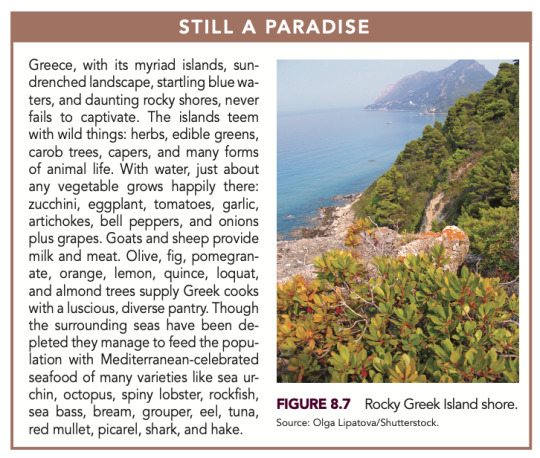
Map of Cuisines
Class Discussion Questions
What influences the various areas being studied? For example, does the area have maritime influences, mountains, dry, Mediterranean climate,
what is the weather like?
• Prepare the following questions for class discussion:
Greece
- What are the three core foods that Greek cuisine has relied upon for centuries?
WHEAT, GRAPE, AND OLIVE
The mountainous Greek mainland, located in southeastern Europe on the southern Balkan Peninsula and perched on the rim of the Mediterranean, is about the size of Louisiana. Eighty percent of the peninsula is mountainous. Mount Olympus (9,570 feet) is the highest peak. The Greek peninsula juts out into three seas scattered with 1,400 islands (227 inhabited) that form the remainder of Greece: Crete in the Mediterranean, the Dodecanese, Lesbos, Chios, the Saronic Island, and the Cycladic Islands in the Aegean Sea, and the Ionian Islands in the Ionian Sea.
- What were early cultural influences on Greek Cuisine?
- How is olive oil produced?
- What are two types of fillo dough?
- Name one island that is part of Greece and discuss its cuisine.
Turkey
- Discuss the main influences on the formation of Turkish cuisine. What are the two cuisines that make up modern Turkish cooking?
- Discuss foods that Turks & Greek share.
- What is sumac? How is it used?
• In your research, bring one-two interesting findings from the area to share in class.
Dish Method Variations
“Popular Dishes: Dolmades (stuffed things), savory pies, spanokopita (spinach-filo pie), octopus, avgolemono (egg-lemon soup), pastitsio, shrimp with feta and tomato, plaki- style and grilled fish, stuffed vegetables, taramasalata (fish roe spread), spoon fruits (pre- serves), souflaki (grilled and shaved meat in a pita), saganaki (Greek fried cheese), arnáki frikassé (fricassee of spring lamb), grilled octopus, moussaka (layered eggplant casserole)
Drinks: Turkish coffee, tea, herbal tisane, beer, fruitade, red wine, retsina, ouzo, brandy”
Sources
1) Discovering Global Cuisines
2)https://www.whiskaffair.com/sumac-onions-recipe/
RECIPES

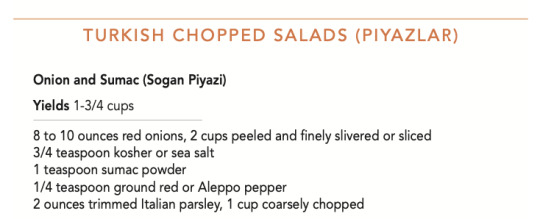

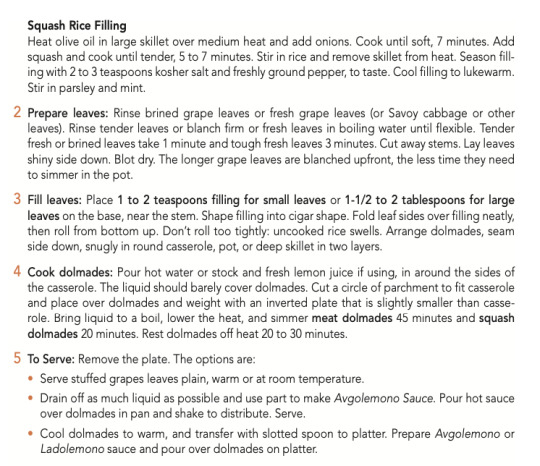
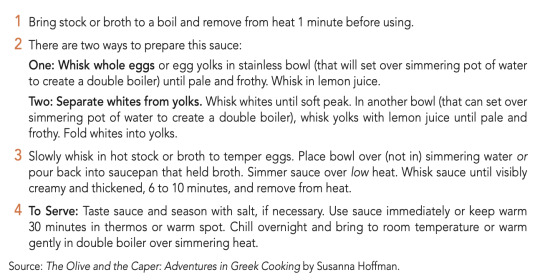
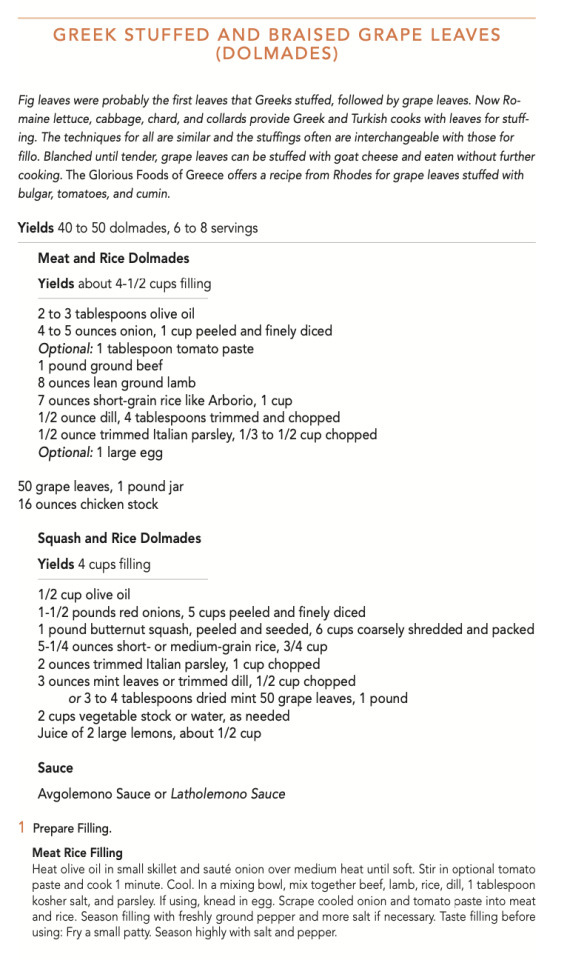



Plan of Work
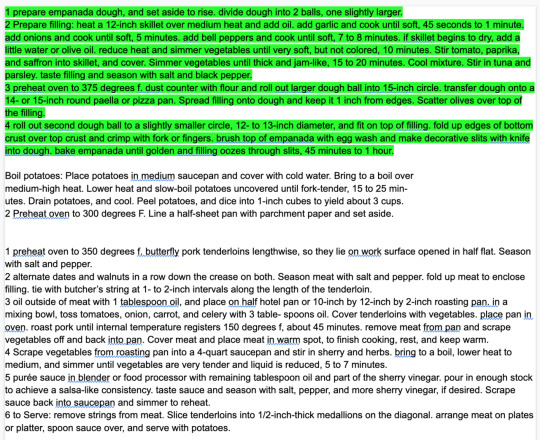
REFLECTION
Technique/cooking method:


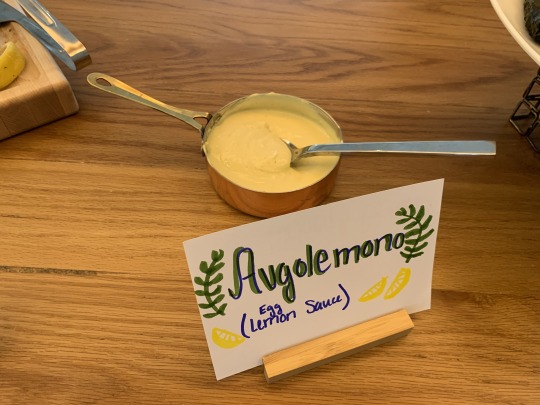

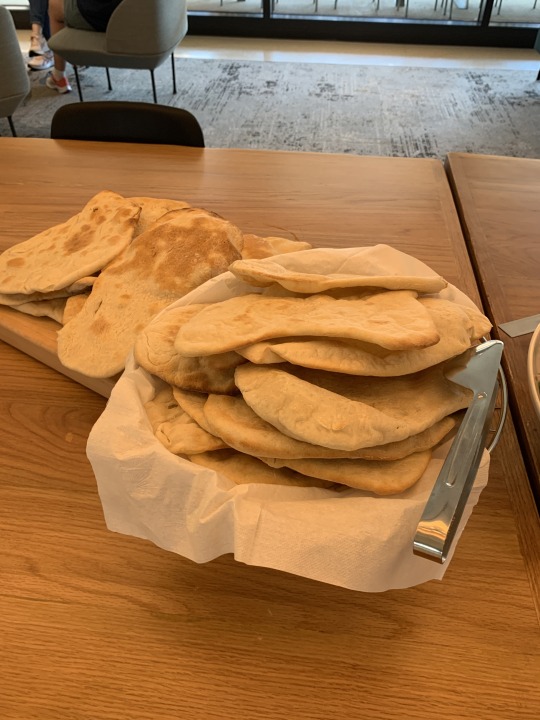



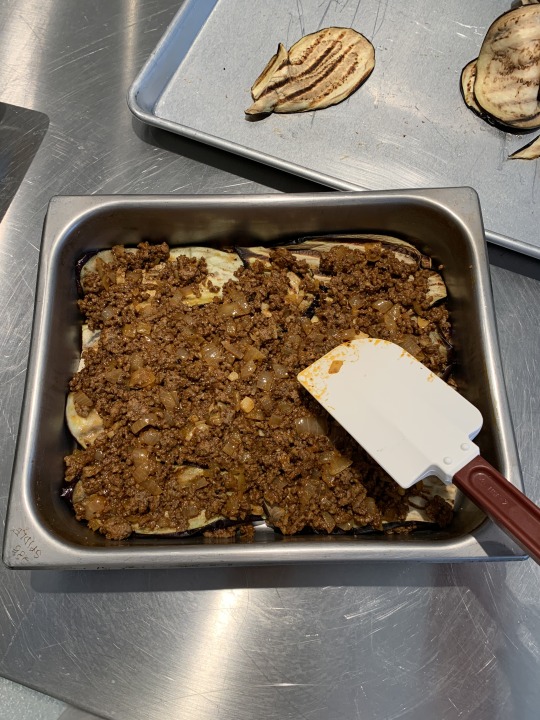
Evaluation of results:
Discuss the techniques that did work well.
Discuss the techniques that did not work well. The empanada dough did not work at all! We had to use puff pastry. The tenderloin got dry from all of the cooking.
Conclusions
The learning objectives were met.
Thank you for reading!
0 notes
Text
Spain
INTRODUCTION
This week, I will be learning…
Method: deep frying, stuffed meat, paella, empanada
Menu:
Fiery Fried Potatoes pg. 468
Sizzling Shrimp Cazuela pg. 470
Fruit & Nut Stuffed Pork Tenderloin pg. 488
Classic Paella pg. 482 sub recipe Romesco Sauce pg. 466 OR Allioi pg. 465
Tuna & Bell Pepper Empanada pg. 490
Empanada dough pg 489
Prior Knowledge
I have not had much spanish food. I have learned about it through a friend who lived there. I know that there is a lot of fish with meals, and that the eating schedule is a bit different.
Learning Objectives
This week, we will
RESEARCH
Method of Cooking
“Spanish cooks, like cooks in Italy and France, prepare a base of aromatic vegetables like onion, garlic, and tomato, and cook it down into a thick sauce. This sofrito or sofregit is just one of the fundamental sauces of Spanish cuisine. Others are béchamel, samfaina, picada, romesco, salsa Española, vinaigreta, salsa verde (green sauce), mojos, pisto, marinera, tomato sauce (like southern Italian sugo pummarola), and allioli (mayonnaise). Many types of stew begin with a version of sofrito/sofregit, which provides a savory base for fish, meat, poultry, and vegetable dishes. Spanish cooks say mayonnaise originated with an eighteenth-century Minorcan cook.”
Drying meats: this uses the natural climate to preserve meat for long periods of time.

Origin and History
“Traditional Spanish food has long been considered plain and earthy. Its fresh, natural fla- vor relies on excellent ingredients with a minimum of seasoning. Cooks enhance the in- trinsic flavors of fresh food without disguising them.”

Map of Cuisines
Class Discussion Questions
Dish Method Variations
Thicker Sauce: Remove crusts from one slice white bread and tear bread into small pieces. After adding olive oil, alternately add small pieces of the bread and small amounts of water or broth until sauce is thick, but not as thick as a paste.
Sources
1) Discovering Global Cuisines
RECIPES
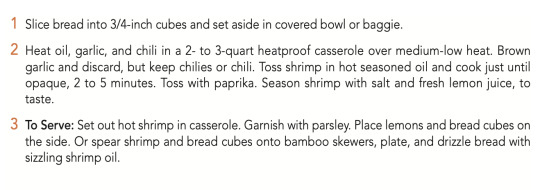
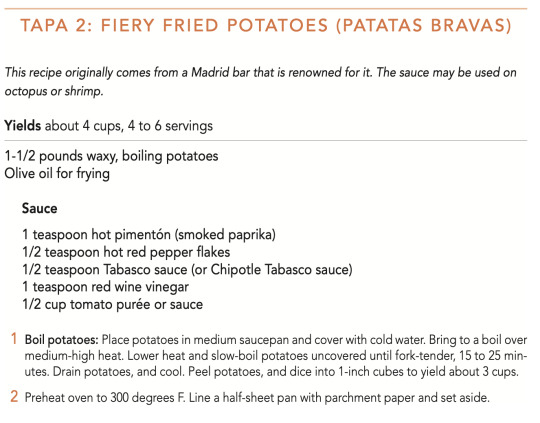





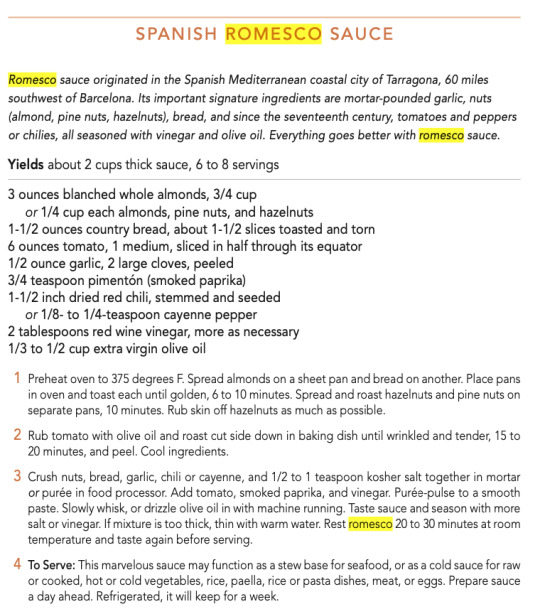



Plan of Work

REFLECTION
Technique/cooking method:
Fiery Fried Potatoes: The potatoes were fried potatoes, pretty yummy. We fried them in the deep fryer so it was golden browned perfectly. The oil was hot enough that it did not soak with oil. The spices were very good.

Sizzling Shrimp Cazuela: The shrimp got cold, it became rubbery. I could not finish it because the texture threw me off. It would have been better with more ingredients.


Fruit & Nut Stuffed Pork Tenderloin: The tenderloin turned out a bit dry.
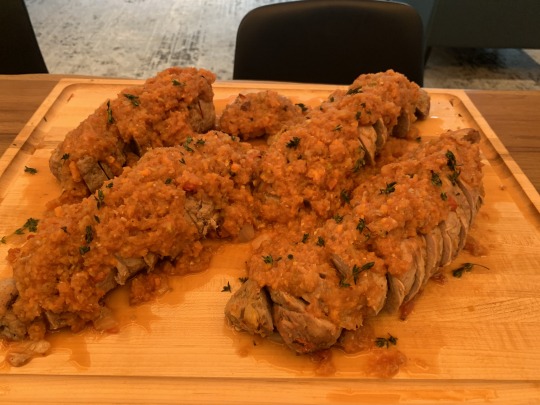
Classic Paella: sub recipe Romesco Sauce
The paella with the rabbit was very interesting. The flavor was umami, sour, sweet somewhat. It needed more salt. It also needed more water in the cooking process; some of the rice got dry where it stuck to ingredients that were out of the water.


Tuna & Bell Pepper Empanada: We made the empanada into a tart because the dough did not work out.
Empanada dough: The empanada dough did not work at all! We had to use puff pastry.
Evaluation of results:
Discuss the techniques that did work well.
Discuss the techniques that did not work well. The empanada dough did not work at all! We had to use puff pastry. The tenderloin got dry from all of the cooking.
Conclusions
The learning objectives were met.
Thank you for reading!
0 notes
Text
France and Italy
REFLECTION
Technique/cooking method:
The method worked. I am not sure exactly that I could replicate the results based on the lab. I do feel that I learned a lot about ingredient selection for the various dishes.
Below, mise for the tom kha gai.
Hand roll: the fried rolls were a success. The food inside was soft and juicy while the shell was crispy and golden brown.
Tom kha gai: The method worked. The soup was quite spicy, but not as spicy as it could have been considering I took the pith and seeds out of half the peppers before they went in.
The chicken was somewhat stiff and chewy but the way it was cut made the pieces biteable.
Taste: The green curry was sweeter than the massaman. It had a strong fat taste due to the use of coconut milk and cream.
All of the dishes were spicy. The fried hand roll was the mildest in flavor. The tom kha was well balanced between salty and sweet.
The green curry leaned toward the sweet side, but the fish sauce was able to balance it out.
Flavor: The flavor of the green curry was somewhat licorice-y, wish a bit of heat.
The citrus aromatic could be tasted in the tom kha gai through the lemongrass and the lime leaf as well as lime juice.
The coconut flavor shone through in these dishes. The palm sugar also made a nice appearance; you could taste the difference in the sugar in the green curry dish ( I added a lot of palm sugar on accident but it worked out).
Texture: The texture of the hand roll was appealing. It was flaky and crunchy on the outside but soft and chewable on the inside.
The texture of the chicken in the curry was surprsingly soft for how long it was cooked on the stove.
The green curry was creamy.
The texture of the tom kha was interesting. Part of the thai style involves leaving the obstacles and non-food ingredients in the final dish and plate presentation. This was an interesting texture for myself and many of our guests.
Appearance:



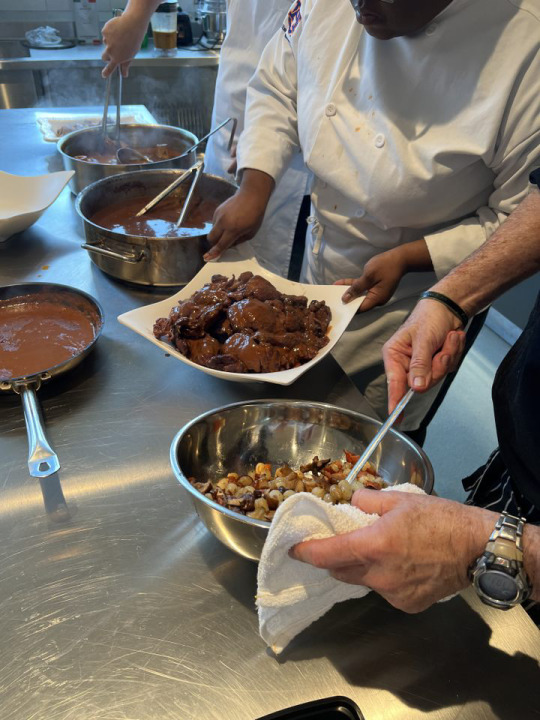

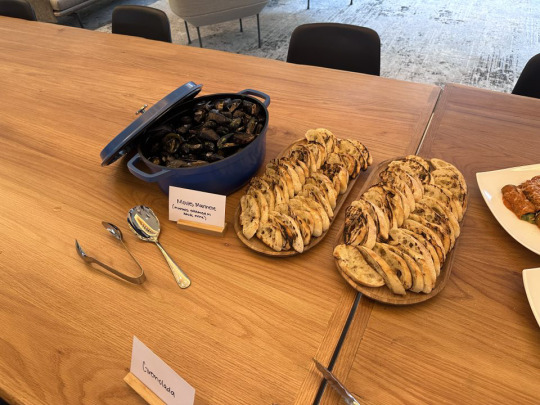
Evaluation of results:
Discuss the techniques that did work well.
The thai curry method and hand roll method worked well. The tom kha gai method worked well.
I learned some thai flavor balancing techniques involving fish sauce and palm sugar. I also learned that there is a lot of importance in watching and waiting for signs when making thai curry. It can be a very artful and instinct-driven dish.
Conclusions
The learning objectives were met. I feel like we did not get to compare and contrast Thailand, Vietnam, and Indonesia as much since we focused on Thai, but we still discusses the cuisines in lecture, so I feel decently familiar with the concepts.
Thank you for reading!
0 notes
Text
India
Week 5: Chapter 4: India Sustainability Topic: Animal husbandry
INTRODUCTION
This week, I will be learning…
Method: grilled skewers, Indian curry, chutney
Menu:
Paneer Cheese & Spinach | Saag paneer, or palak paneer Sak
Southern Chickpea-Coconut Curry with Basmati Rice | Kadalakari
Eastern Tadka Dal (tempered lentils)
Wheat Flatbreads | Chappati
Grilled Chicken Skewers | tikka
Tomato-Chili Cachumbar (cucumber-onion-tomato salad)
Tamarind Chutney
Vocabulary: paneer, chutney, chapattis, dal
Prior Knowledge
I love Indian food. I know that it can be a bit puzzling to order from an authentic Indian restaurant’s menu if you never have, so I have studied some of the vocabulary. I like to get the chickpea curry and sometimes I will get it Indian hot spice level. Not every time though. I also like the vegetable pakora. Paneer is interesting, it is basically rectangular cheese curds. Tandoor is a type of oven used to cook naan and meat. There are many things to cool your mouth with when the food gets spicy; there is a yogurt cucumber dish, cucumber raita, and there is the mango lassi which is a sweet yogurt beverage. Plus, there is always rice.

Learning Objectives
This week, we will introduce the history of India, its geography, cultural influences, and climate.We will introduce Indian culinary culture, its four main regional variations, and dining etiquette. We will identify the spices, foods, flavor foundations, seasoning devices, and favored cooking techniques of north and south India, their differences and similarities. We will reveal how this cuisine feeds more than one billion 300 thousand people from land one-third the size of the United States. Finally, we will teach the loved techniques unique to north and south India through recipes.
RESEARCH
Method of Cooking

“The word Tandoor means a cylindrical oven used for baking and cooking. Traditionally the fuel used in Tandoor is charcoal or firewood. Modern Tandoor ovens uses cooking gas and electricity also instead of charcoal. The charcoal or firewood burns inside the tandoor oven itself exposing the cooked item exposure to live-fire and hot air from it. The temperature inside the Tandoor is kept near to 480 degrees Celsius. The food cooked in the Tandoor oven is known as Tandoori.The radiant heat and convection cooking technique from the Tandoor, allowing the fat and juices from the cooked dish drip into the fuel, thereby making it extremely delicious [...](2).”


“Paneer is Indian cottage cheese made by curdling the milk. You can either curdle the milk with vinegar or lemon juice. You can also use yogurt. Once the milk is curdled, you collect the cheese in a muslin cloth and then let it set until it’s firm. And that’s about it! Seriously, it’s that easy to make paneer at home(3).”
Below, paneer being strained and set in a muslin cloth.
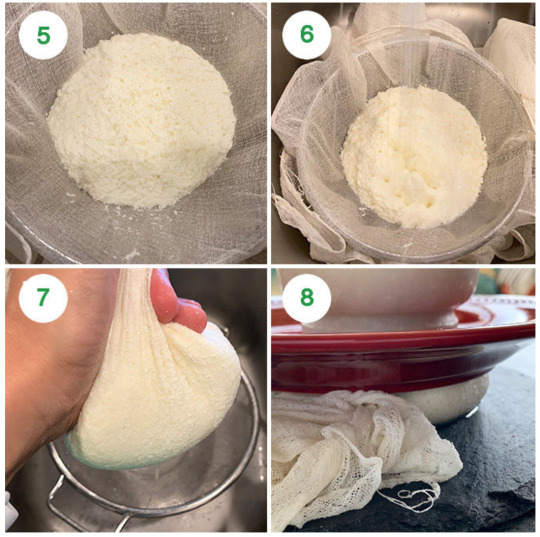
Origin and History
Indian cooks have evolved their methods over centuries of experimentation. “The combinations and differing interpretations make it hard to create a “blueprint” for blending spices—most are passed on from elders to children.
Think of Indian seasonings as a medicine cabinet; most have health supportive properties: blood sugar and cholesterol reducer, circulation increaser, warming, anti-arthritic, digestive, laxative, preservative, antioxidant, anti-inflammatory, stimulant, blood purifier, bronchial aid, anti-spasmodic, anti-nausea, calmative, tonic, anti-flatulent, aphrodisiac, and antiseptic/ antibacterial/anti-fungal properties.”
Some seasonings build flavor, some add color, and some contribute aroma.
Map of Cuisines
Class Discussion Questions
+What influences the various areas being studied?
+For example, does the area have maritime influences, mountains, dry, Mediterranean climate, what is the weather like?
Prepare the following questions for class discussion:
+From what ancient philosophy did Indian cuisine evolve?
+Name two differences between south and north Indian food?
+What are the four ingredients that make up an Indian "mirepoix"?
onion, garlic, ginger, and chili
+Discuss the techniques for preparing a northern vs southern style curry dish.
+In your research, bring one-two interesting findings from the area to share in class.
Dish Method Variations
“A variety of non-vegetarian dishes as well as different types of flatbreads like Tandoori Roti, Tandoori Naan, Tandoori Laccha Paratha and many more can be prepared by the Tandoor way. Tandoor style of cooking is used by people of a vast geographical area and so many variants like Punjabi style, Afghan style, Armenian style, etc. are very popular.”
Sources
1) Discovering Global Cuisines
2)https://tandoorofindia.com/what-is-tandoor/
3) https://www.cookwithmanali.com/how-to-make-paneer-at-home-homemade-paneer-recipe/
4)https://www.intechopen.com/chapters/77299
RECIPES



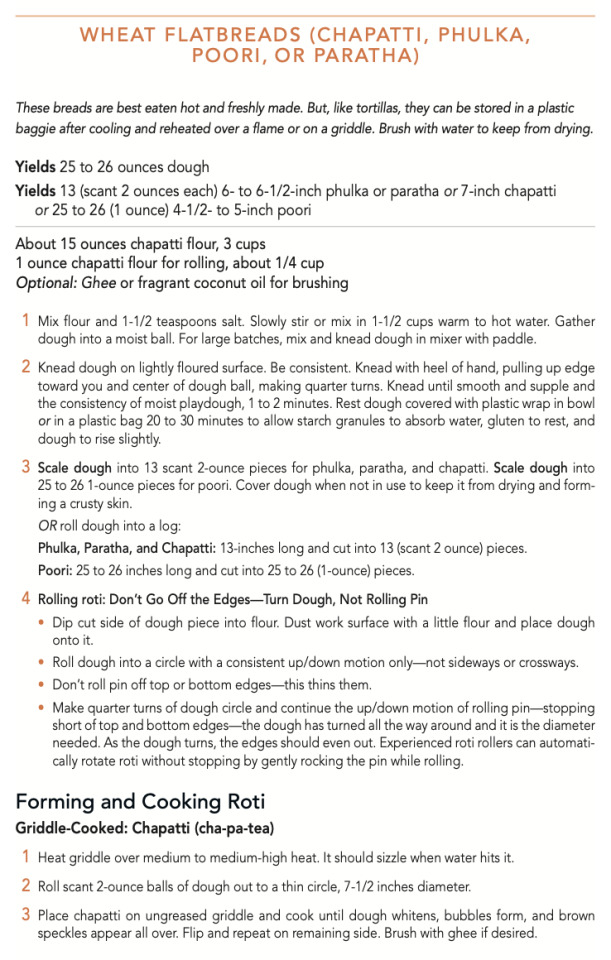

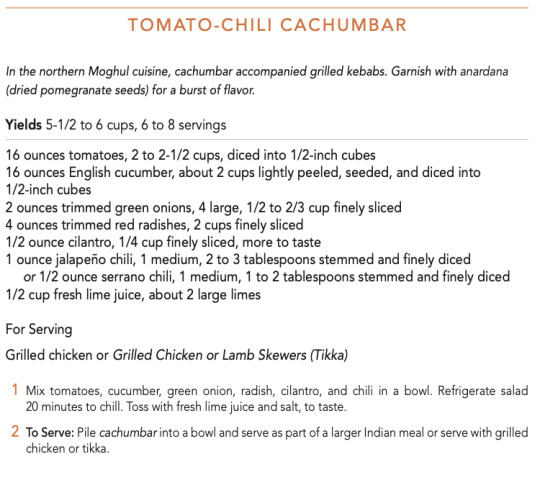

Plan of Work


0 notes
Text
South East Asia: Thailand, Vietnam, and Indonesia
Week 3: Chapter 2: Thailand, Vietnam, and Indonesia Sustainability Topic: Animal husbandry
INTRODUCTION
This week, I will be learning…
Method: soup, rice paper rolls, stirfry noodle, rice
Menu: Thai Chicken Coconut Soup, Sticky Rice, Vietnamese Sweet & Sour Dipping Sauce, Vietnamese Rice Paper Wrapped Rolls, Indonesian Fried Noodles with pork, Indonesian Vegetables with peanut sauce
Vocabulary: galangal, papaya, tom kha gai, pad thai, gaeng bah
Prior Knowledge
I have made thai curry before; it is one of my favorite things to make whenever I have the ingredients. I have not had much Vietnamese food or Indonesian food. I know that south east asia uses fish as a source of umami. I have used the little dried shrimp in my curry paste before.
Learning Objectives
This week, we will introduce three of the most influential countries of South East Asia, their histories, geography, cultural influences, and climates.
We’ll introduce the culinary cultures, regional variations, and dining etiquette of Thailand, Vietnam, and Indonesia. We’ll identify the foods, flavor foundations, seasoning devices, favored cooking techniques of Thailand, Vietnam, and Indonesia, and how they differ and where they are similar. We’ll discuss technique and recipes of the major dishes of Thailand, Vietnam, and Indonesia.
RESEARCH
Method of Cooking

Origin and History
Thailand contains two flourishing cuisines:
the palace cuisine and the simple, practical peasant cuisine. (Street food is a much-relished third.) Peasant cuisine is spicy and robust, fast-cooked with stir-fried noodles or meat. Palace cuisine is sweeter, less intense, with richer ingredients like coconut milk and lots of fruit and vegetable carving and elaborate presentation. Rice, fish, and seafood are important to both.
Vietnam:
“Originally a breakfast from North Vietnam’s capitol, Hanoi, pho has become the signature noodle dish or soup of all Vietnam. Vietnamese eat it for breakfast, lunch, or a late-night snack. Prepare it with beef, chicken, shrimp, or pork. Hanoi-style pho bo with beef and pho ga with chicken are the favorites.”
“Northern pho uses wide noodles and more green onion than southern style pho. Southern Vietnamese pho broth is sweeter and includes bean sprouts and many fresh herbs with variations in meat, broth, and additional garnishes such as lime, hoisin, bean sauce, and chili sauce.”
Indonesia:
Indonesia contains people of many ethnic backgrounds due to the huge amount of trade that took place in the sixteenth century. “Multiethnic Indonesia’s national motto is Unity in Diversity. Today almost 90 percent of Indonesians are Muslim, with Buddhist, Hindu, and Christian minorities. Indonesians speak numerous languages and dialects, but Bahasa Indonesia is the official language.”
In Indonesia, cultivated or forest grown crops like rice, corn, vegetables, sago, coconut, spices, mung beans, cabbage, carrots, peanuts, potatoes, and asparagus prevail.

Map of Cuisines

Class Discussion Questions
• Study area maps
• What influences the various areas being studied? For example, does the area have maritime influences, mountains, dry, Mediterranean climate,
what is the weather like? Thailand: mountains, river
• Prepare the follow questions for class discussion:
- Name two large countries that influenced Southeast Asian cuisine
- What two types of cuisine flourish in Thailand? Describe the differences.
- What two countries influenced Vietnamese cuisine? Discuss their influences.
- Name one Vietnamese dish and discuss its preparation.
- Name the three main islands of Indonesia.
- What were the key cultural influences on Indonesian cuisine and why?
- What two foods define the Indonesian diet?
- In your research, bring one-two interesting findings from the area to share in class.
Dish Method Variations
In Indonesian cooking, the salam leaf is a common ingredient. Cooks fry the leaves in oil to bring out their delicate flavor. Some cooks substitute the more flavorful Indian curry leaves, however it is not the same thing. Some suggest substituting the bay leaf, but the qualities are totally different.
Fish and poultry can be switched based on availability. Green and red curry flavors allow for variation in the protein, though green pairs better with poultry and vegetables.
Sources
1) Discovering Global Cuisines
2)https://en.wikipedia.org/wiki/Pho
3)https://en.wikipedia.org/wiki/Ring_of_Fire
RECIPES

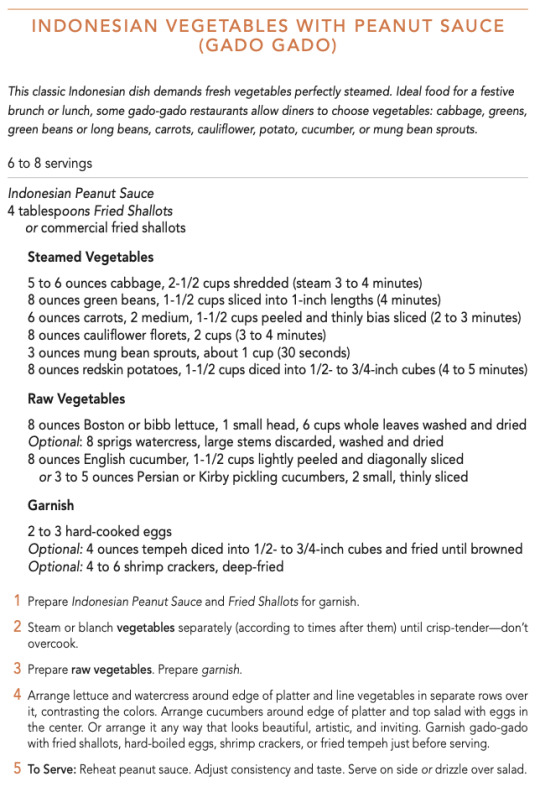





Plan of Work
Mis for all dishes.
I would start on the soup base so that it can develop flavor.
Prepare pork for stir fry.
Prepare rolls and cover. Finish soup.
Rice near the end.
Assemble vegetable dish, make peanut sauce.
Fire noodles, finish dipping sauce.
REFLECTION
Technique/cooking method:
Thai curry: The method worked. I am not sure exactly that I could replicate the results based on the lab. I do feel that I learned a lot about ingredient selection for the various dishes.
Below, mise for the tom kha gai.

Hand roll: the fried rolls were a success. The food inside was soft and juicy while the shell was crispy and golden brown.
Tom kha gai: The method worked. The soup was quite spicy, but not as spicy as it could have been considering I took the pith and seeds out of half the peppers before they went in.
The chicken was somewhat stiff and chewy but the way it was cut made the pieces biteable.
Taste: The green curry was sweeter than the massaman. It had a strong fat taste due to the use of coconut milk and cream.
All of the dishes were spicy. The fried hand roll was the mildest in flavor. The tom kha was well balanced between salty and sweet.
The green curry leaned toward the sweet side, but the fish sauce was able to balance it out.
Flavor: The flavor of the green curry was somewhat licorice-y, wish a bit of heat.
The citrus aromatic could be tasted in the tom kha gai through the lemongrass and the lime leaf as well as lime juice.
The coconut flavor shone through in these dishes. The palm sugar also made a nice appearance; you could taste the difference in the sugar in the green curry dish ( I added a lot of palm sugar on accident but it worked out).
Texture: The texture of the hand roll was appealing. It was flaky and crunchy on the outside but soft and chewable on the inside.
The texture of the chicken in the curry was surprsingly soft for how long it was cooked on the stove.
The green curry was creamy.
The texture of the tom kha was interesting. Part of the thai style involves leaving the obstacles and non-food ingredients in the final dish and plate presentation. This was an interesting texture for myself and many of our guests.
Appearance:

Evaluation of results:
Discuss the techniques that did work well.
The thai curry method and hand roll method worked well. The tom kha gai method worked well.
I learned some thai flavor balancing techniques involving fish sauce and palm sugar. I also learned that there is a lot of importance in watching and waiting for signs when making thai curry. It can be a very artful and instinct-driven dish.
Conclusions
The learning objectives were met. I feel like we did not get to compare and contrast Thailand, Vietnam, and Indonesia as much since we focused on Thai, but we still discusses the cuisines in lecture, so I feel decently familiar with the concepts.
Thank you for reading!
0 notes
Text
Japan and Korea
Week 3: Chapter 2: Japan and Korea Sustainability Topic: Agriculture
INTRODUCTION
This week, I will be learning…
Method: Velveting, Chinese stew, Chinese Way to Cook Rice
Menu: Sushi Rolls, Seasoned Sushi Rice, Japanese miso soup, Japanese Sesame Salad with Roasted Sesame Dressing, Kimchi Fried Rice, and Crisp Korean Kimchi Pancakes with Korean Seasoned Soy
Vocabulary: miso, kimchi, sushi
Prior Knowledge
I have learned about sushi through sushi restaurants. I have made sushi at home, but I usually do not have the best ingredients.
Below is the best sushi roll I’ve ever had but I can’t tell you where. It’s called the donkey on crack.
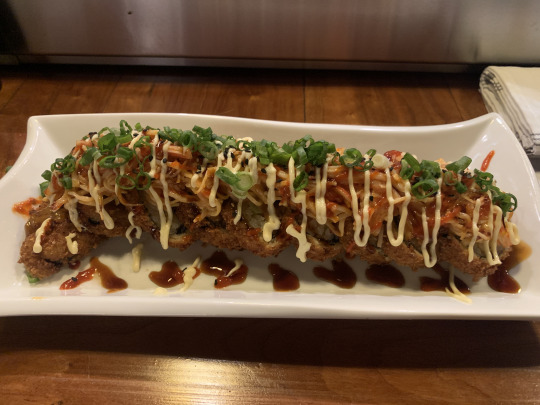
Learning Objectives
This week, we will introduce the histories of Japan and Korea, each country’s geography, cultural influences, and climate. We will introduce Japanese and Korean culinary culture, their regional variations, and dining etiquette. We will discuss the influences of Japanese and Korean cuisines on each other and their differences and similarities. We will identify major aesthetic, philosophical, and religious influences We will identify Japanese and Korean foods, flavor foundations, seasoning devices, and favored cooking techniques. Finally, we will offer the major dishes of Japan and Korea through techniques and recipes.
RESEARCH



Method of Cooking
Sushi:
Pancake:
Sushi Rice vs Fried Rice:
Origin and History
Map of Cuisines
Class Discussion Questions
Dish Method Variations
Sources
1) Discovering Global Cuisines
2)
RECIPES




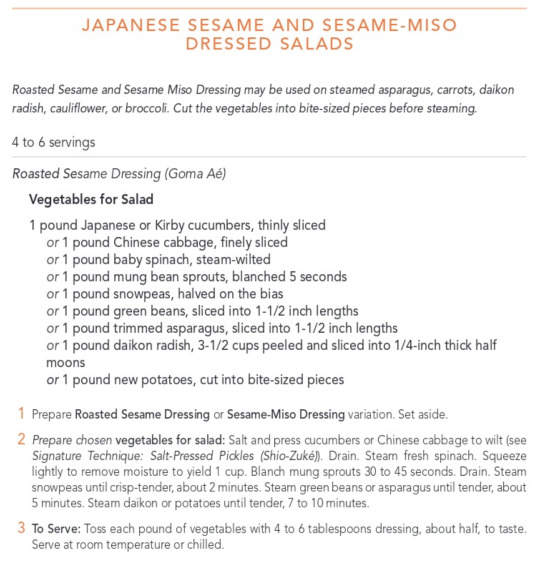
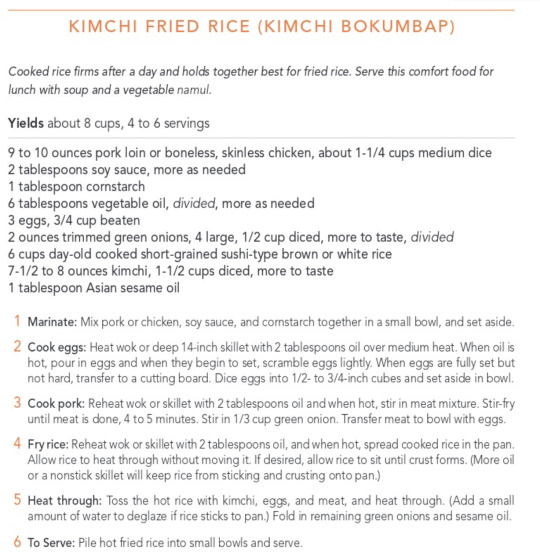
Plan of Work
REFLECTION
Technique/cooking method:
Steaming dumplings: The folding of the dumplings This technique worked. When the dumplings were steamed they turned somewhat transparent and the texture became gummy and chewy. Pan-frying dumplings: The wok and vegetable oil produced an eye catching golden brown. It looked nice that the browning was only done to one side. This also resulted in a crunch in the otherwise soft bite. Very good over all.
Taste: The foods with MSG had a much stronger umami and were more balanced in my opinion. There was increased savory flavor in the broccoli that has MSG. It tasted meaty even though there was no meat. The fermented black beans also added to the umami flavor. They were yeasty and some described them as chocolately.
Flavor: The flavor of the dumplings utlized three aromatics of chinese cooking, ginger, green onion, and garlic.
Texture: The biscuit texture was flaky and soft (except for the rawness. I baked mine at home to finish the process and they were very tasty with jam). The muffin texture was disappointingly dense, and oily as mentioned. I wish we had used the creaming method and used butter instead of oil in our muffins.
Appearance:



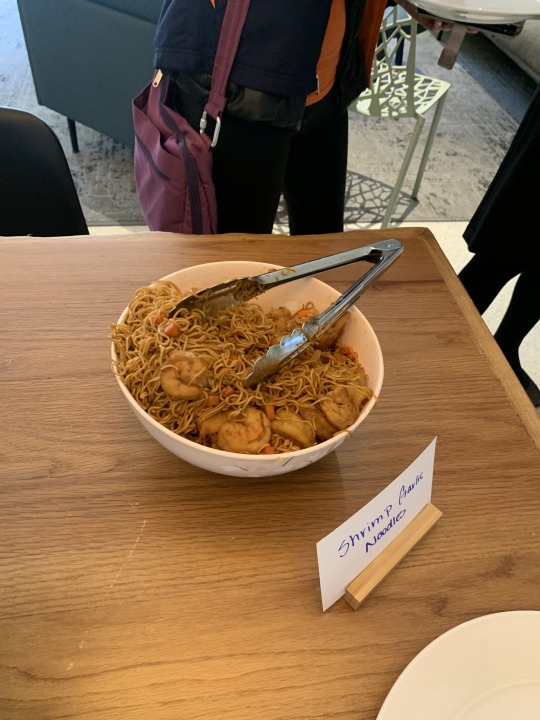

Evaluation of results:
Discuss the techniques that did work well.
The sushi method worked very well. We did simple rolls that are hard to get wrong. The sushi tasted good as well since the ingredients were of a good quality.
Conclusions
The learning objectives were mostly met. We identified Japanese and Korean foods, flavor foundations, seasoning devices, and favored cooking techniques. We discussed the regions as a whole, and internal differences, which I found to be interesting.
Thank you for reading!
0 notes
Text
Week 2: Chapter 1: China // Sustainability Topic: Big Picture
INTRODUCTION
This week, I will be learning…
Method: Velveting, Chinese stew, Chinese Way to Cook Rice
Menu: Velveting Chicken in Oil, Spicy Western Chinese Stew, Broccoli in Fermented Black Bean Sauce, Chinese Way to Cook Rice, and Northern Pork & Cabbage Potstickers (Jiaozi)
Vocabulary: velveting, jiaozi, mapo doufu
Prior Knowledge
I have learned about the silk road in history class; I could have payed more attention, however, I know that the trade network introduced new ideas and new ingredients and connected China to European countries and Asian countries. I have consumed Chinese films and books that, among other things, portray traditional cooking techniques. Oftentimes there is a giant pot with meat and vegetables floating in it, always there is rice. From skimming the textbook for recipes, I noticed that in some areas, wheat is the dominant grain. I am interested to learn more about how geography has shaped the regional cuisine, and what makes Chinese cooking distinct.
Learning Objectives
This week, we will introduce the history of China, its geography, far-reaching philosophical, religious, and cultural influences, and its climate. We will discuss the importance of the Silk Road, how it connected China across continents to the Middle East, the Mediterranean, and Rome, and its effects on Chinese cuisine. We will introduce China’s culinary culture, four main regional cuisines, and dining etiquette. We will identify Chinese foods, flavor foundations, seasoning devices, and famous cooking techniques. Finally, we will teach by technique and recipes the major dishes of China.
RESEARCH
Method of Cooking
Velveting: Typically, after the meat is marinated, it is quickly blanched in a bath of hot oil and then drained, at which point it’s ready to be stir-fried. The end result is meat that’s tender, silky, and smooth in texture. “During cooking, the velveting mixture also protects the meat fibres, preventing them from seizing, resulting in more tender meat (Wiki).”
Scarce and expensive fuel has caused Chinese cooking times to be short. The Mapo Doufu is braised quickly, in accordance with this generality.
Origin and History
“Mapo tofu is said to have originated in Chengdu in the late 1800s. Ma translates to “pockmarks”, while po refers to an older woman. Together these reference the dish’s inventor, Mrs Chen, an elderly woman with smallpox scars (Sheppard).”
Noodles have been documented in China as early as 200 BCE! In northern China wheat is historically more available than rice, so noodles are more common.
Map of the four main regional cuisines (Source):
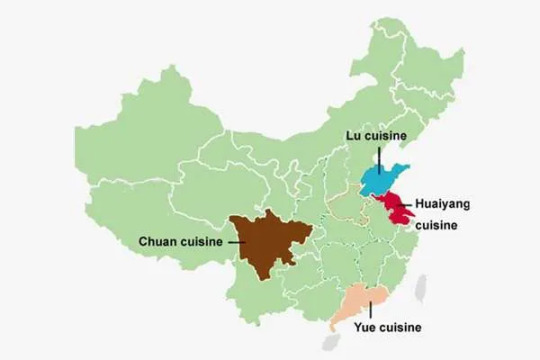
Class Discussion Questions
+What was the Silk Road? How and why was it developed? What did it eventually promote? Trading of culture, land and sea routes. Buddhism
+Name foods that moved along the Silk Road. “Through the fourteenth century, the Silk Road promoted an unprecedented sharing of ideas, arts, sciences, innovations, cooking techniques, and foods like onions, dates, figs, olives, oranges, apples, grapes, spices and herbs, tea, salt, potatoes, melons, sesame seed, walnuts, almonds, carrots, cucumbers, peanuts, wheat, chickens, and pomegranates.” +What is the main difference between Cantonese food and Szechwan food?
+Discuss the important Chinese philosophies regarding food. Yin and Yang. Dark and yielding, Light and firm. The balance of opposites. The five elements.
+In your research, bring one-two interesting findings from the area to share in class. Oranges are China’s most plentiful fruit and represent wealth and good fortune. Foods fall into two categories: fan (rice and grain dishes) and t’sai (meat and vegetable dishes).
Dish Method Variations
Foods fall into two categories: fan (rice and grain dishes) and t’sai (meat and vegetable dishes). Meat can be omitted from the meal in many instances.
Sources
Discovering Global Cuisines
2)https://www.chinadiscovery.com/china-silk-road-tours/silk-road-routes.html
3)https://www.seriouseats.com/chinese-velveting-101-introduction-water-velveting/
https://en.wikipedia.org/wiki/Velveting
RECIPES
(click for better image quality)
for 1lb of chicken




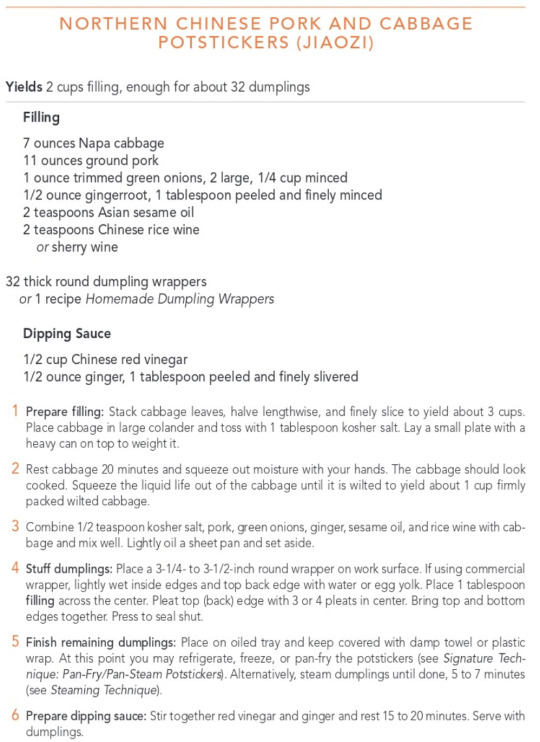
Plan of Work
REFLECTION
Technique/cooking method:
Steaming dumplings: The folding of the dumplings This technique worked. When the dumplings were steamed they turned somewhat transparent and the texture became gummy and chewy. Pan-frying dumplings: The wok and vegetable oil produced an eye catching golden brown. It looked nice that the browning was only done to one side. This also resulted in a crunch in the otherwise soft bite. Very good over all.
Taste: The foods with MSG had a much stronger umami and were more balanced in my opinion. There was increased savory flavor in the broccoli that has MSG. It tasted meaty even though there was no meat. The fermented black beans also added to the umami flavor. They were yeasty and some described them as chocolately.
Flavor: The flavor of the dumplings utlized three aromatics of chinese cooking, ginger, green onion, and garlic.
Texture: The dumplings were crispy and soft on the inside.
Appearance:




Evaluation of results:
Discuss the techniques that did work well.
Folding the dumplings intricately did not work; the edges of the dumpling wrappers were too dry. We were able to fold them simply by using our thumbs to press the edges together.
Conclusions
The learning objectives were met.
Thank you for reading!
0 notes
